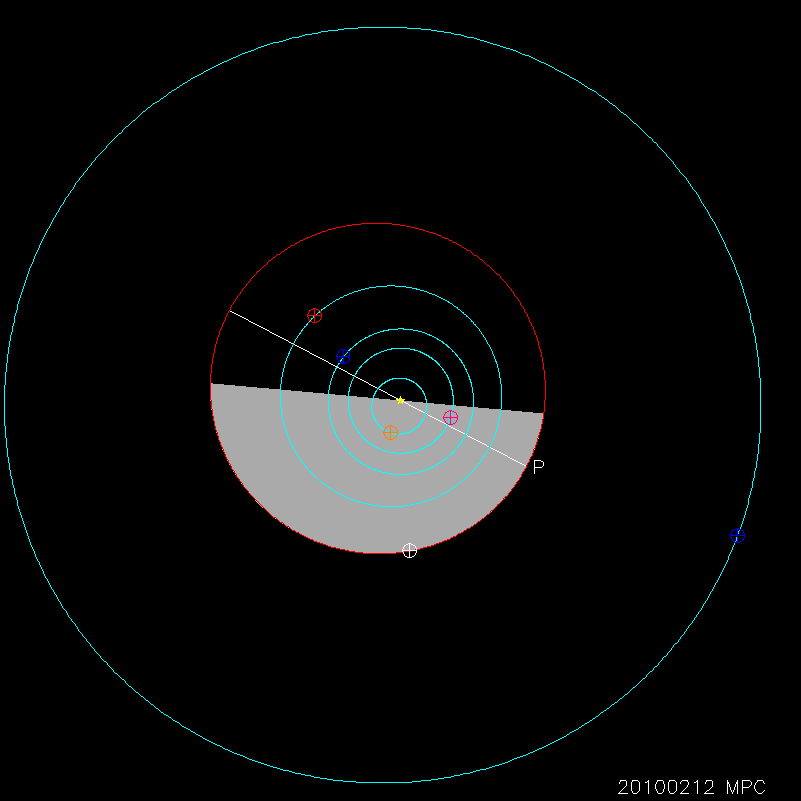(19383) Rolling Stones
Minor planet number 19383 has been named in honor of the eternally Rolling Stones.The citation announcing the naming appeared on Minor Planet Circular 49281 (issued on 2003 Aug. 6), from which the following is extracted with permission:
(19383) Rolling Stones = 1998 BZ32
Discovered 1998 Jan. 29 by the OCA-DLR Asteroid Survey at Caussols.
The Rolling Stones are the longest lasting rock-and-roll group,
embarking on their fortieth anniversary of great music.
Read about how minor planets are named.
About (19383) Rolling Stones
(19383) Rolling Stones is in a 3.51-year elliptical orbit around the sun ranging in distance from 292.6 million km (at perihelion, closest point to the sun) to 398.2 million km (at aphelion, furthest point from the sun).The next perihelion passage will occur on 2010 July 20.8 UT.
The orbit is inclined by 6.8 degrees to the ecliptic plane (the plane of the earth's orbit about the sun).
There is little information on the physical properties of (19383) Rolling Stones. Even its diameter is uncertain--a range of 3 to 6 km is probable.
You will need a telescope to see this minor planet as its maximum brightness is some 1/12693 of the brightness of the faintest objects that can be seen with the unaided eye.
The diagram below show the orbit of (19383) Rolling Stones in relation to the major planets in the inner solar system.

This view of the inner solar system is seen from the north ecliptic pole. The sun is the yellow star at the center of the image. The blue orbits represent, in increasing distance from the center, the major planets Mercury, Venus, Earth, Mars and Jupiter. The position of each major planet at the date indicated at the bottom of the plot is shown by the large circled cross. The orbit of the minor planet is shown in red, with the location of the minor planet (at the date indicated at the bottom of the plot) shown as a white circled cross. From this vantage point the planets revolve around the sun in a counter clockwise direction. The vernal equinox is off to the right. The portion of the minor planet's orbit that is below the plane of the earth's orbit is shaded grey. The perihelion point of the minor planet's orbit is at the end of the white straight line through the sun indicated by "P".
Also available is information on provisional designations.
Where is (19383) Rolling Stones tonight? Customisable ephemerides are available.
Back to Rock & Roll Minor Planets
